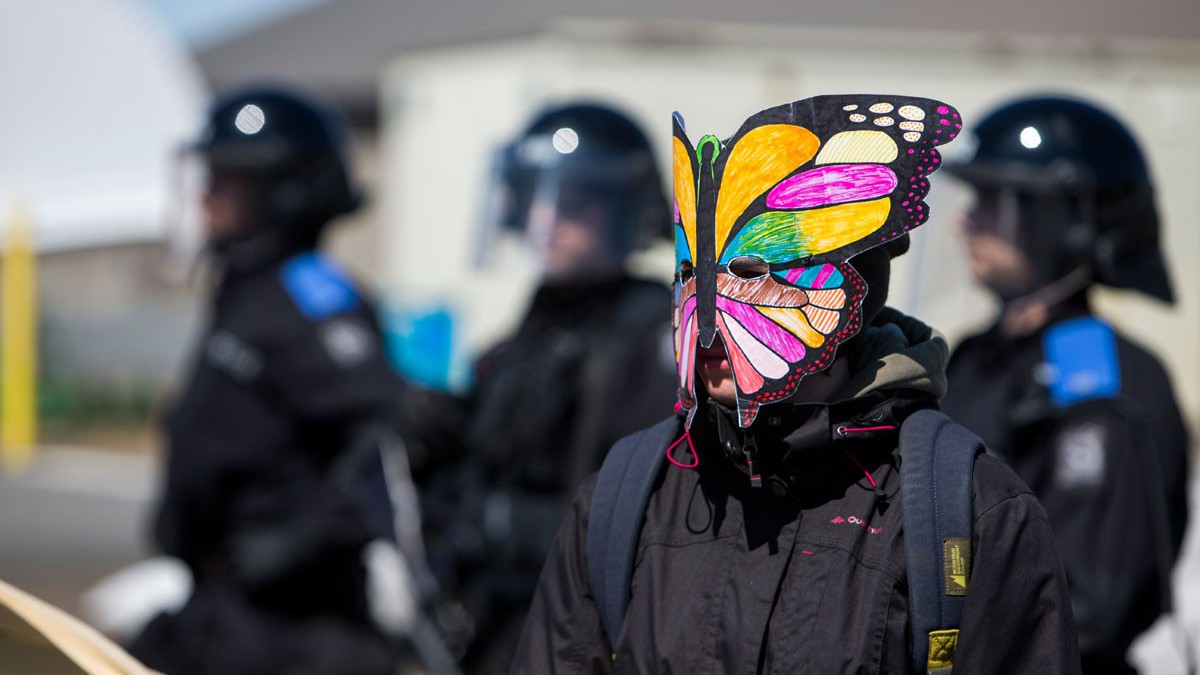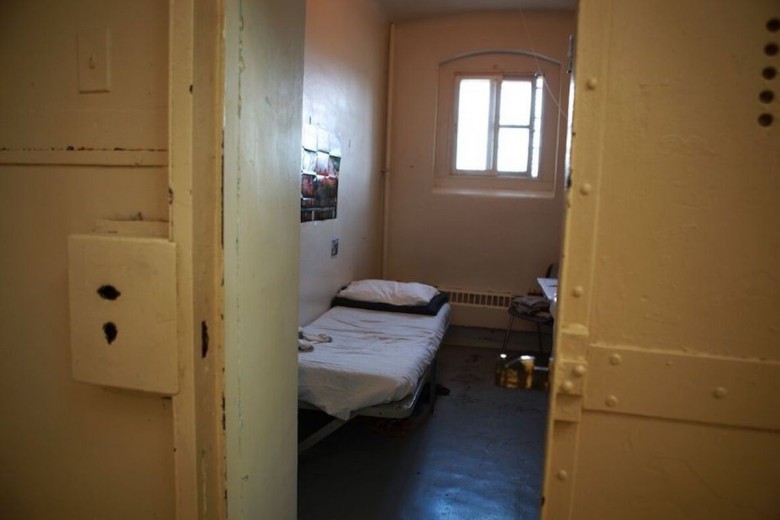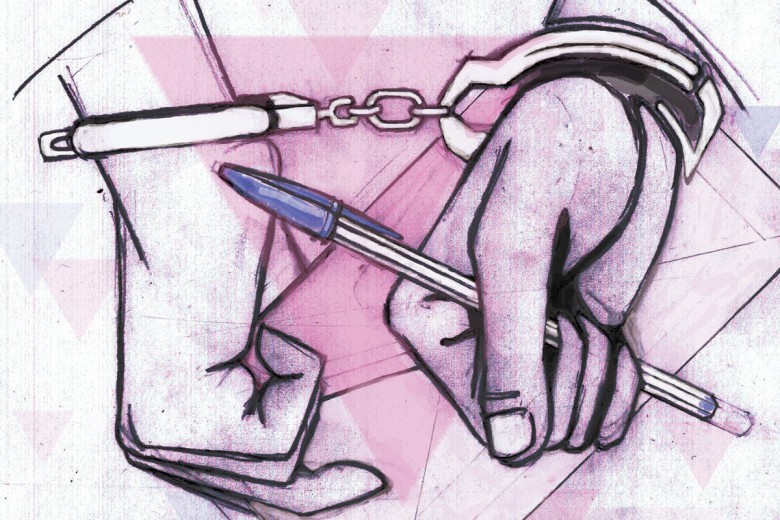It was a cold New Year’s Eve in Laval, the island suburb just north of Montreal.
A few hours before 2018 turned to 2019, a group of about 150 people had bused into Laval. Bundled against the cold, with backpacks full of fireworks and noisemakers, they were getting ready to ring in the new year with a demonstration.
Sandwiched between Laval’s industrial section to the east, farmland to the north, and sprawling suburbs to the west, there is an area of the city with four prisons, all next to one another. A minimum security “federal training centre”; the Leclerc provincial women’s prison; a multi-level security federal training centre; and a detention centre for migrants, administered by the Canada Border Services Agency (CBSA).
Every year, anarchists and prison abolitionists organize noise demonstrations outside the four facilities on New Year’s Eve. It’s part of an international anarchist tradition, whose origins are unclear, and serves as a way to remind the people inside that they aren’t alone at a particularly difficult time of year. Participants shoot fireworks into the air, bang drums, and rattle the fences that surround buildings filled with cages.
“Every city, every town, burn the prisons to the ground.”
Four prisons, four stops planned in the demonstration. But this year, an extra stop was added to the itinerary – the site where CBSA plans to build a new detention centre for migrants.
Stopping at a nondescript spot, a patch of open land between the existing jails, speakers told the crowd about the CBSA’s plans for the new detention centre, garnering boos from listeners. One speaker described having family members who had been locked inside the existing migrant facility nearby, and affirmed that no new prison would be built.
Fireworks lit up the night sky. The crowd cheered, and continued on to wish more prisoners a happy new year.
*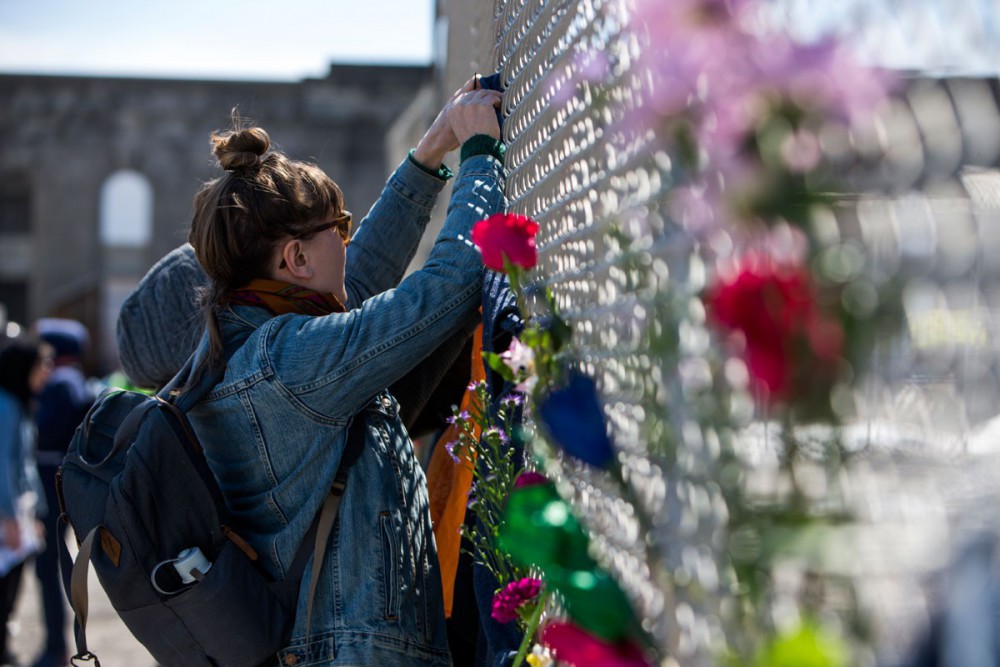
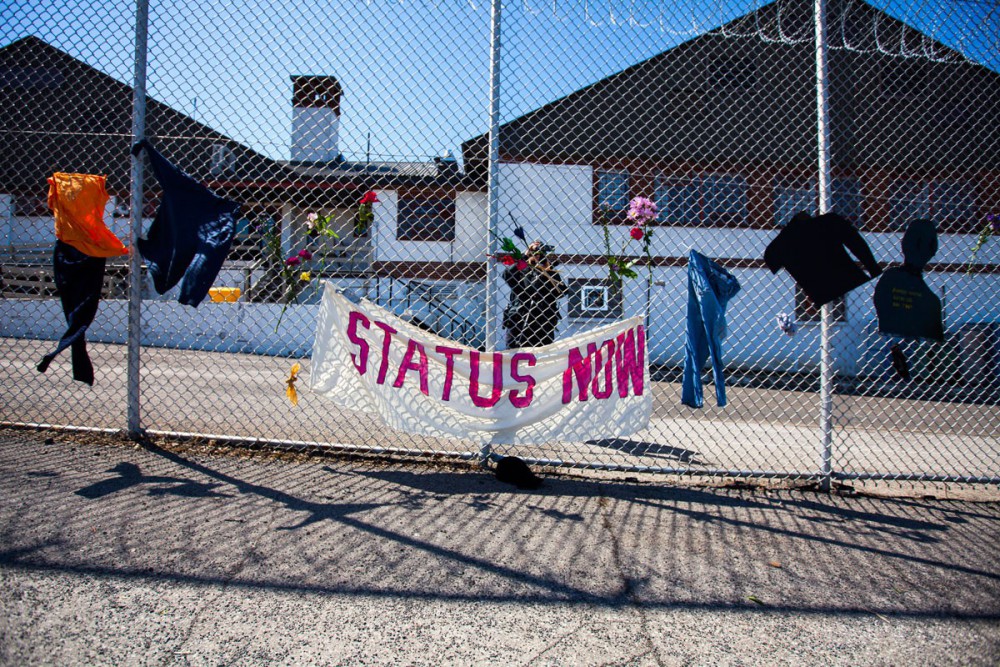
“There were little windows, but you couldn’t see outside, you couldn’t see anything. There were huge doors that were always locked. In the rooms, there were uncomfortable beds. It was like sleeping on the floor.”
Maria, whose name has been changed to protect her privacy, was locked inside Laval’s current migrant detention centre for just over a week when she was 16 years old. Recently, she spoke to members of Solidarity Across Borders (SAB), a migrant justice organization in Montreal, about her experiences inside. SAB agreed to give Briarpatch access to the interviews.
“They didn’t give us covers, only little blankets, and it was really cold. In the morning they woke us up at 3:45 in the morning to eat, but it was food that was two or three days old. […] Sometimes we wouldn’t eat it, but sometimes we were so hungry we didn’t have any choice.”
“Every city, every town, burn the prisons to the ground.”
Maria and her mother were released from the detention centre. Her father and brother were deported – two of the over 213,000 “removals” executed by CBSA since 2000, according to an access to information request obtained by Briarpatch.
“They treated us like we weren’t human beings, like we were animals.”
Maria’s story echoes the widespread criticism, made by migrants themselves as well as advocacy groups, of the conditions of detained migrants. Like Maria, critics also describe the anxiety of being detained for an undefined period of time, without charges.
In 2016, 50 migrant detainees began refusing meals inside two maximum-security prisons in Ontario to protest against the conditions of their confinement. They refused to end their hunger strike until they were given a meeting with the immigration and public safety minister, Ralph Goodale.
A month after the strike began, Goodale announced that he would be overhauling Canada’s migration detention policy. He never met with the hunger strikers.
The new National Immigration Detention Framework was released in January 2017, complete with a budget of $138 million. Some of the funds went toward the construction of two new detention centres, meant to replace two existing ones due to their “poor physical state and design and space limitations.” The new facility in Laval would replace the existing facility next door, and a new facility in Surrey would replace the existing facility in Vancouver.
In the document CBSA produced from its “stakeholder roundtable discussions,” the agency describes how detention must be “truly a last resort,” how migrant detention is “not punitive” but is intended to “ensure the integrity of the immigration system and to ensure public safety.”
A month after the strike began, Goodale announced that he would be overhauling Canada’s migration detention policy. He never met with the hunger strikers.
“In a lot of ways, Goodale tried to recuperate the mainstream critiques of immigration detention,” says Amy Darwish, an organizer with SAB. “Namely that the problem is that they’re being held in prisons, and that the solution therefore is to build more detention centres.“
CBSA keeps statistics on the reasons migrants are detained. In the 2017–2018 fiscal year, less than 1 per cent of detained migrants were classified exclusively as a “danger to the public.” Over 80 per cent were listed exclusively as “will not appear.” An additional 4 per cent are listed under both categories. Under the Immigration and Refugee Protection Act’s section on detention, “will not appear” means a detainee “is unlikely to appear for examination, an admissibility hearing, removal from Canada, or at a proceeding that could lead to the making of a removal order by the Minister.”
While over 80 per cent of all CBSA detentions fall under that category, it is unclear how many of them are based on the assumption that a migrant will not appear at an important date with the immigration bureaucracy, and how many of them are directly meant to facilitate “removals,” or deportations.
The majority of detentions, too, are short term. The average length of confinement in 2017–2018 was about 14 days. The median, though, is two days – suggesting the existence of a cohort of long-term detainees who are skewing the average much higher. Canada places no limit on the amount of time migrants can be detained without charge.
Around one-third of detainees, at any given time, are housed inside provincial prisons or “other facilities” not dedicated specifically to migrant detention. That number has decreased slightly under the new framework, but remained at 29 per cent in 2017–2018.
The National Immigration Detention Framework “comes at the same time as the government has ordered the CBSA to increase the level of deportations by about 30 per cent,” says Sam Hoffman, an organizer with Ni frontières, ni prisons, a group that has emerged to campaign against the new Laval detention centre. “So this is very clearly an investment in strengthening the capacity of the government to detain and deport migrants.”
*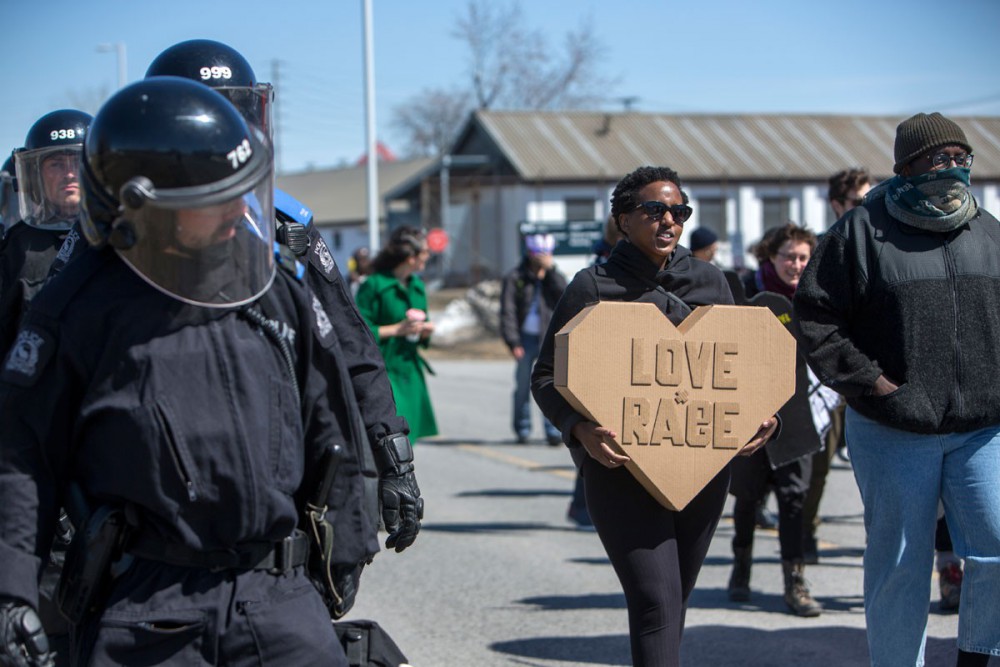
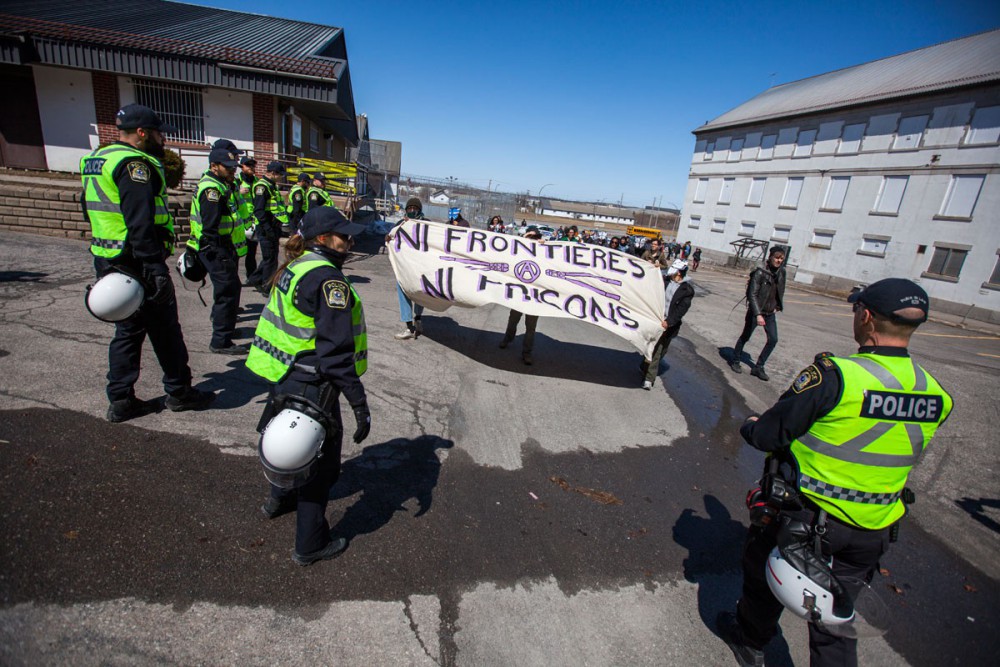
Lemay is an architecture firm based in Montreal’s historically working-class, rapidly gentrifying St. Henri neighbourhood. The company designed much of the architecture in the area of Montreal now known as Griffintown – a formerly industrial section of the city that was razed to the ground and built anew, with condo towers piled on top of one another.
On the long list of sustainable, Leadership in Energy and Environmental Design (LEED) certified, intelligently designed buildings for which Lemay claims responsibility on its website, at least one major project is absent – the migrant detention centre the company designed for the CBSA in Laval.
Lemay, along with another firm called Groupe A, designed the plans for the facility, for which they were paid $4 million. In a 2017 CBSA-produced schematic design report, the not-yet-constructed building is described as having a “warm and homey feeling.” The building “should be based on LEED standard,” with low-voltage lighting, wood sourced from Forest Stewardship Council-certified forests, and recycled material used throughout the facility.
In a separate “Specs” document, where the requirements for each room are described in detail, another side of the facility is revealed. Rooms “must eliminate protruding objects that could heighten the risk of suicide by hanging [and] ensure maximum surveillance of Detainees.” All the windows facing outside will be covered in iron bars, which “must be designed in a manner that makes them as inconspicuous as possible to the outside public.”
The architecture plans for the facility show a building with “the appearance of a daycare from the outside, but a prison from the inside,” says Darwish.
“For the people on the inside, it doesn’t matter if there are leaves on the window, if you’re going to be separated from the people that you care about,” she says. “It doesn’t matter if the building is more energy efficient if you’re going to be deported back to a situation of danger. At the end of the day, this is a facility that’s aimed to facilitate deporting people.”
The architecture plans for the facility show a building with “the appearance of a daycare from the outside, but a prison from the inside.”
Despite public statements from Ralph Goodale and the CBSA about preventing child detention, a “play room” in the new facility will be stocked with “toys and games geared to children of preschool and primary age.” Another “Children & Family Recreation Yard” will include “fencing around yard to be minimum 8m high fencing with barbed wire top,” and must “provide visual abatement around yard that prohibits sight into the yard from exterior.”
“People have highlighted the horrifying situation that migrant children face in the United States,” says Sylvie Freeman, a prison abolitionist in Montreal who is involved in the campaign against the detention centre. “I think a lot of people do that without realizing that the same thing is happening in Canada. This new migrant detention centre is being made with the goal of having children in it.”
Washrooms and shower areas are to be equipped with motion detectors. Bathroom stalls across the facility will have Plexiglas ceilings to prevent suicides.
The male and female “recreation yards” will be surrounded by a “minimum of 3.6 metre high perimeter fence made of anti-corrosion metal with anti-climb screen,” topped with “anti-corrosion coil barbed wire.” The property outside the facility itself will be lined with a last fence, viewable to passersby, to prevent escapes. This fencing “should be esthetically covered by foliage or other materials to limit harshness of look and detract from overt identification of fence.”
*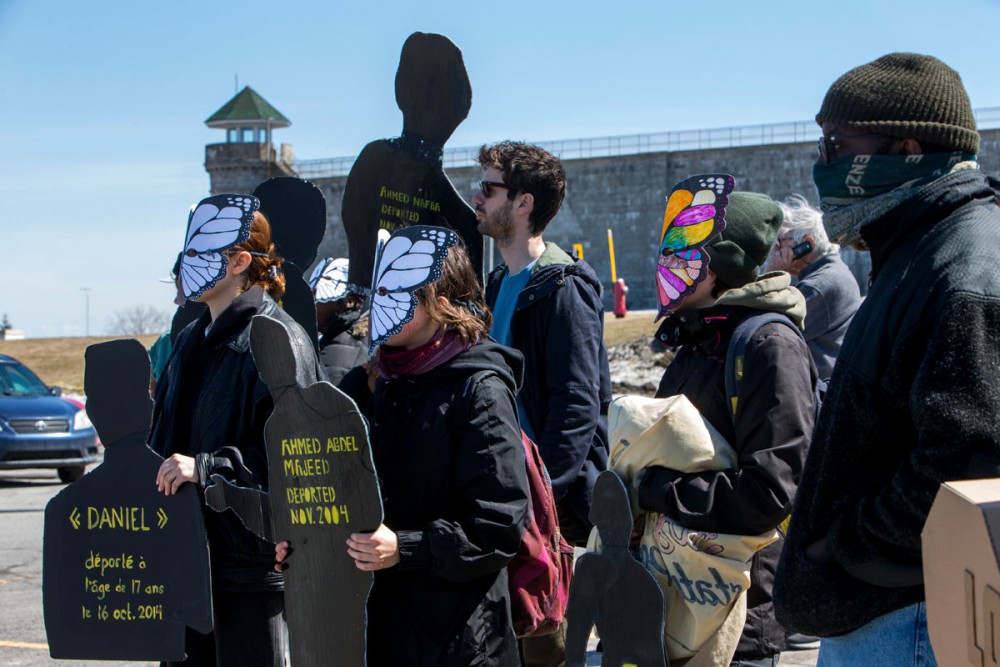
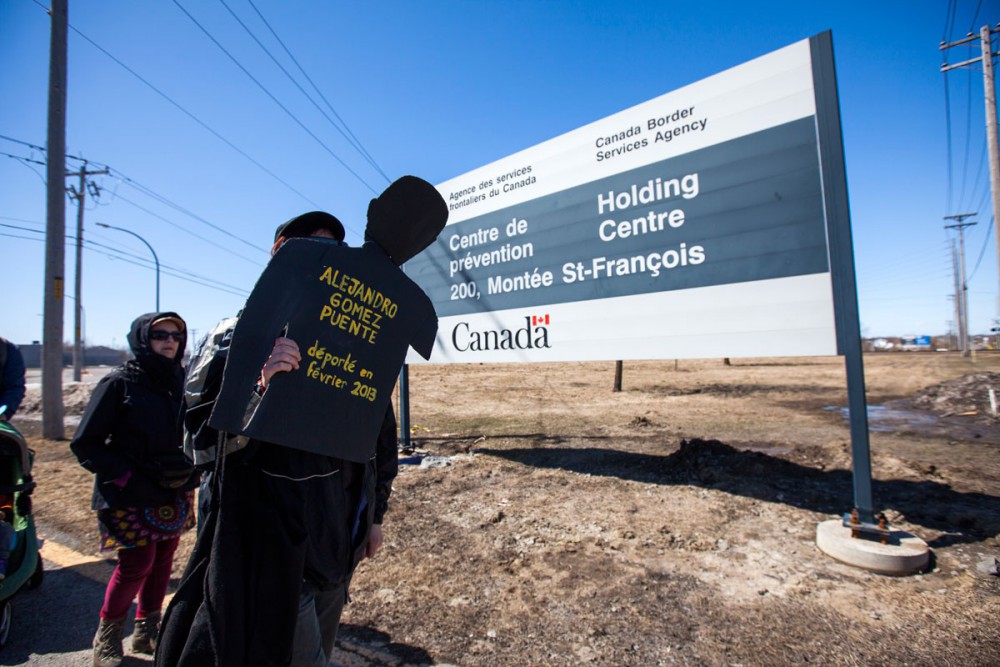
In the early morning hours, one day in April 2018, a group of people calling themselves an “anti-construction crew” ripped a sheet of plywood off the wall of a building in Montreal’s St. Henri neighbourhood. The wall of the newly constructed building open, the group let loose thousands of crickets into the space.
They were targeting the head offices of Lemay, an act of retaliation against the company’s involvement in building the migrant detention centre in Laval. Afterwards, the anonymous crew released a statement online explaining their actions.
The crickets were the first direct action against the architects of the detention centre, but they wouldn’t be the only one. In March 2019, a group of people smashed the windows of a condo sales office, and a condo tower’s ground floor was covered in paint from a fire extinguisher. Both buildings were designed by Lemay. The company has also had protests outside its offices by a coalition of migrant solidarity organizations and anti-gentrification groups. In mid-April, another nighttime attack against the Lemay head office saw the building’s locks glued shut, its electronic sensors destroyed, and its garage doors blocked with a “combination of spike strips and smoke bombs, which were rigged to go off if the garage doors opened,” according to the statement released anonymously online.
This year, Montreal’s annual anti-capitalist May Day march also saw a brazen daylight attack on the building, as some of the hundreds of masked demonstrators destroyed the building’s facade with paint bombs, and broke most of the ground-level windows.
The wall of the newly constructed building open, the group let loose thousands of crickets into the space.
Other companies involved in the construction process have been targeted as well. Loiselle Excavation, which has been given the contract to decontaminate the site, had the facade of its office building covered in paint, along with the tag “NON À LA PRISON POUR MIGRANTS” – no to the migrant prison.
At press time, the company tasked with constructing the detention centre has not been announced. The bidding process ended on April 1, 2019. While the process was underway, anti-prison organizers organized a call-in campaign against all of the companies known to be considering bids on the construction contract.
“I heard one company responded saying ‘please stop calling us, we’re no longer bidding for the contract,’” Hoffman says. “I heard other companies threatened callers with legal action for harassing them. It’s been a mixed response.”
As the bidding process wore on, CBSA organized a site visit to the location of the proposed detention centre, where interested parties could learn more about the contract they were bidding on. Organizers showed up for a surprise noise demonstration, disrupting the visit, until the company representatives went home.
How the campaign plays out from here will largely depend on which construction company is awarded the contract to build the detention centre, Darwish says. Organizers are developing plans for each one of them.
*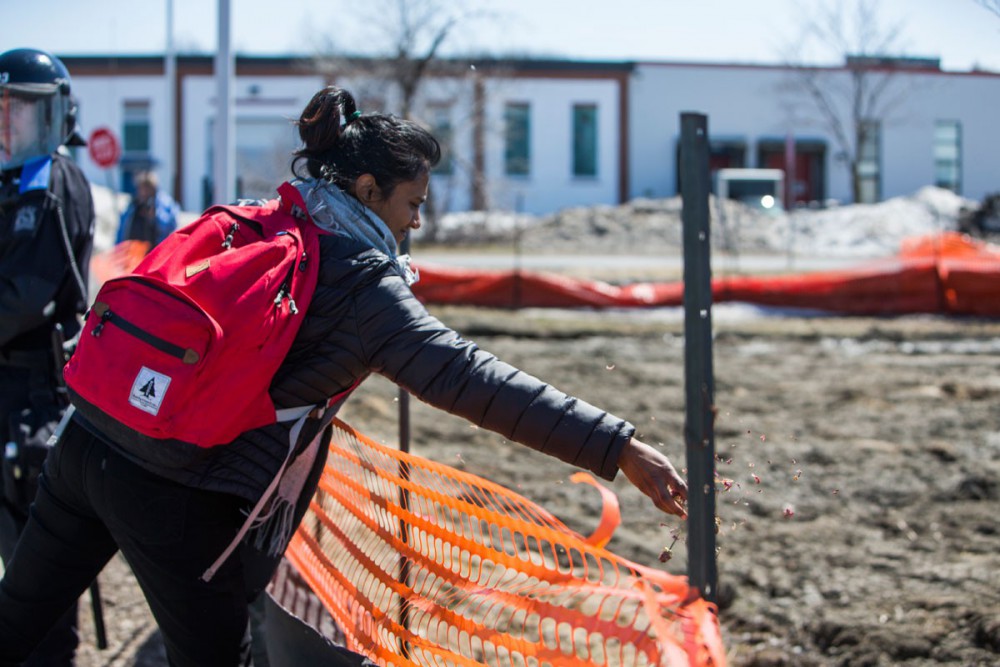
In October 2018, another migrant hunger strike took place in the maximum security prison in Lindsay, Ontario, lasting about three days. The detainees had heard about the National Immigration Detention Framework and wanted to know how it affected them.
The language of the framework, after all, explicitly points toward avoiding detention, and using it only as a last resort. Despite this language, 2017–2018 – the first full year of the framework’s implementation – saw an increase in migrant detention by around 33 per cent, while the length of time that individuals were detained decreased.
Shortening detainment time isn’t the only significant part of the framework’s overhaul, though. As part of its stated plan to reduce detentions, it also commits to piloting a new “alternatives to detention” program.
For CBSA, this means a program where detention is avoided “while ensuring the CBSA has tools to monitor, locate and apprehend the individual if they fail to comply as directed.” The means the agency proposes to achieve this are a combination of electronic surveillance and community partnerships.
“It really seems like the immigration detention system is taking a step closer to the prison system.”
This includes the implementation of a Canada-wide voice-print system, in which an automated phone system would use “voice biometrics” to identify migrants. Individuals participating in this program would record a specific phrase multiple times in the presence of a CBSA officer to create a “template of their voice.” From there, they would be mandated to regularly call in to the CBSA and repeat the phrase multiple times. Their location information, taken from their cellphone provider, would be sent to the CBSA.
Another program, called “electronic monitoring,” would see “high risk” migrants wear ankle monitors which would constantly transmit real-time location data to CBSA. That program is currently being piloted in the Greater Toronto Area.
The framework also proposes “Community Case Management and Supervision” as an alternative to detention. In these cases, a CBSA partner organization would take on the role of creating a “release plan,” and migrants would report to the partner organization rather than to CBSA directly. In Toronto and Vancouver, the Salvation Army is taking on this partnership, as well as the Toronto Bail Program in Toronto. In the rest of the country, this community partner is the John Howard Society, a long-standing prison reform organization that runs halfway houses in the criminal justice system.
For Freeman, the alternatives to detention don’t represent an alternative at all. Rather, Freeman sees the program as a way to expand the reach of the detention regime to outside the walls of the detention centres.
“It really seems like the immigration detention system is taking a step closer to the prison system,” Freeman asserts. “And part of what that looks like is this ‘more humane prisons’ model” that was adopted following prison reforms in the 1990s. Halfway houses, she explains, were introduced as alternatives to incarceration – but before long, they became a mandatory step for people getting out of jail.
“Often reformers are potentially well-intentioned,” Freeman says, “but every time reforms actually go through, they get co-opted. It just seems like prison reform always leads to an extension of the prison-industrial complex.”


